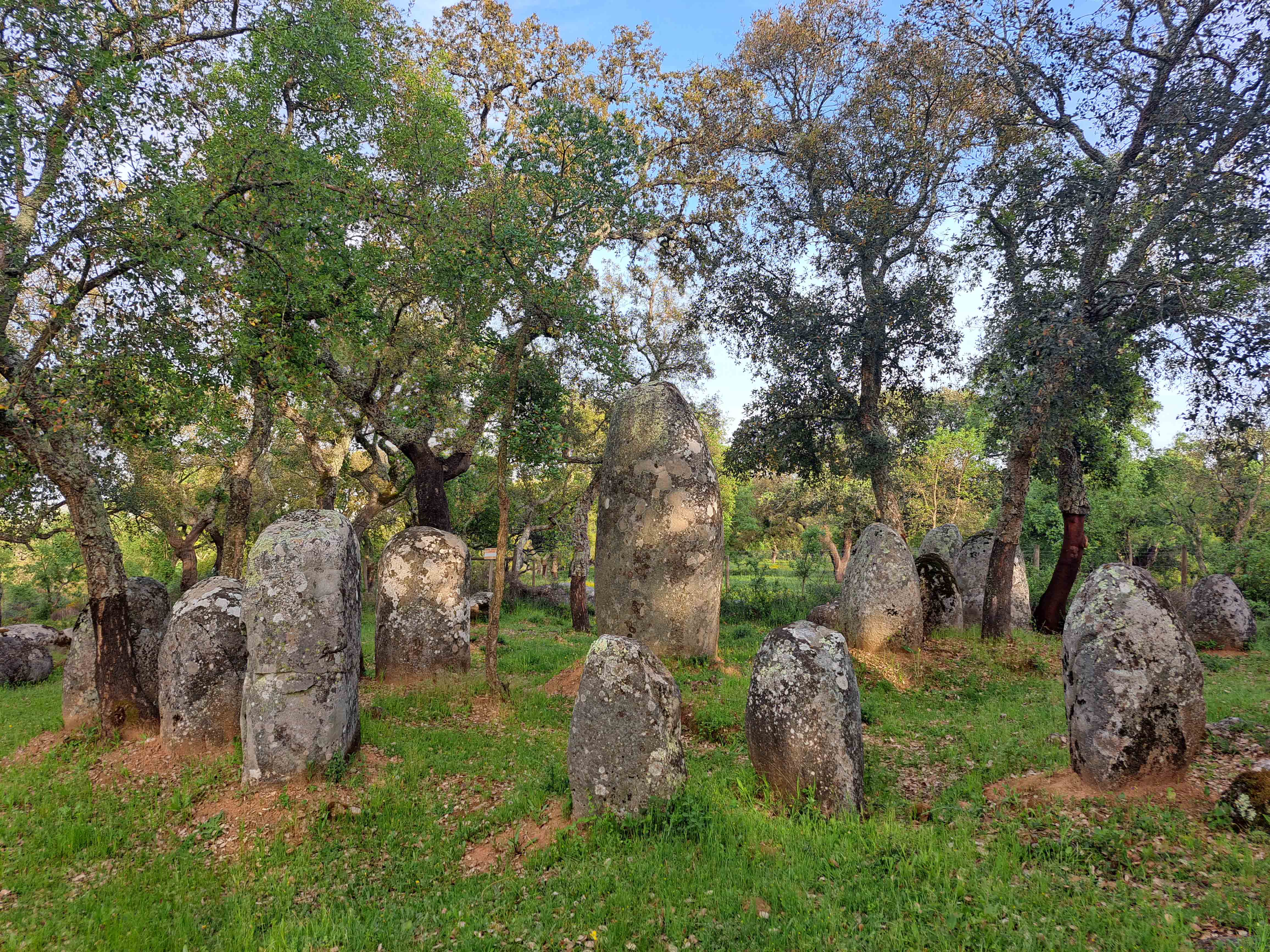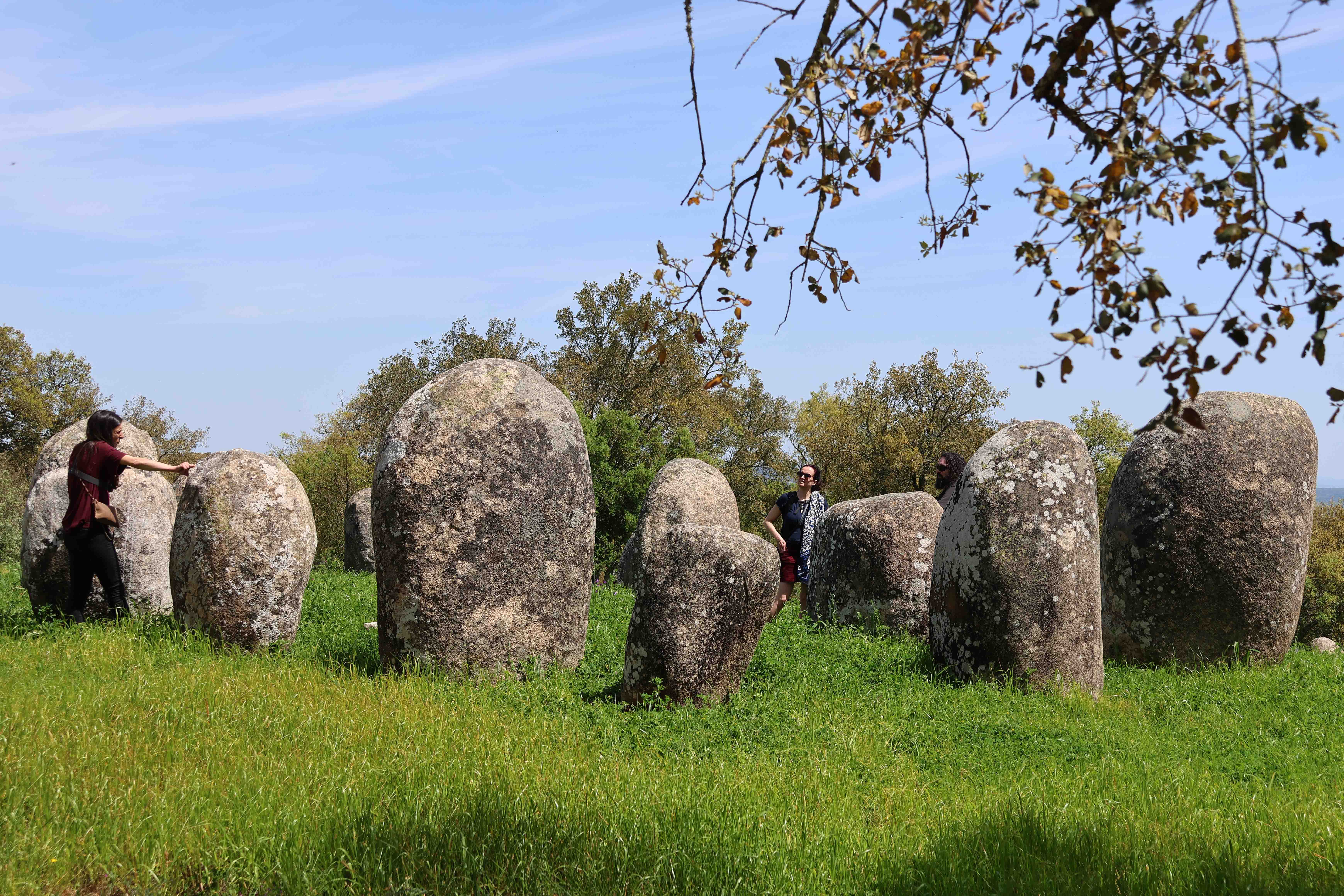13 MAY 2024
ANCIENT MEGALITHIC SITES – BRIDGES FROM THE PAST TO THE FUTURE?
Ancestral Neolithic sites also host a diversity of modern cultural heritage: new stories and communal experiences. In the INT-ACT project, we investigate the intangible culture of today that emerges in relation to European cultural heritage sites of the past. Our focus is on different societal challenges that can be addressed by connecting intangible cultural heritage with their associated tangible heritage sites and presenting these connections through immersive XR environments to visitors. The Évora surroundings in Portugal is one of the most fascinating megalithic regions in Europe. Megaliths are monumental stone structures erected by Neolithic people, such as standing stones in circular patterns often referred to as ‘cromlechs’. While archeologists have divergent theories regarding the possible meanings and knowledges the ancestral constructors related to these sites, some things are more certain. These sites are perhaps the first monuments erected by our ancestors to last for millennia, and they required a vast communal effort to succeed in moving the enormous stones, often long distances, and in placing them on important locations such as hilltops following an intentional pattern. In addition, new research keeps finding other patterns, like connections to both solar and lunar cycles in the stones’ alignments.

Myth, imagination and narrative knowledge enlightened by research
Only 20 km from the city of Évora, The Almendres cromlech – or megalithic compound – is impressive in both size and age. Predating the well-known Stonehenge in England by some 2000 years, it is one of the most ancient sites in Europe, and consists of nearly 100 standing stones – or menirs – in an elliptical form, aligned with astronomical events. Similar smaller, but even more ancient, compounds are found in the region. What messages from the distant past can these mysterious stones deliver? Did the constructors believe they would last an eternity? No doubt these are one of the most enduring types of cultural monuments ever erected by humans. The formation of the impressive rocks creates a magnetic appeal – from afar, they resemble a silent meeting. The rocks are different in size and form, and their placement allows for enjoyable sceneries to the rural landscape. These megalithic structures excite the imagination of researchers, cultural tourists, and many locals alike. Were they representations of important ancestors, families, or other entities? Were the stones entities in themselves, that are supposedly there to do something? How do they relate with the repeating transformations in the night sky across seasons and ages? Visitors are already enchanted by the enigma, mysterious ambience, and space for imagination at these virtually timeless monuments. Nevertheless, research knowledge about prehistory could further enhance their fascination. Studies in archeoastronomy have revealed connections to the 18.6 years cycles of lunar nodes, suggesting a possibility of understanding ancient forms of knowledge. One of the thrilling facts about these sites in the Évora region is that a large part of them have only been rediscovered and reconstructed in recent decades. Excavations have revealed curious decorated objects and human-made engravings in and around the stones, many of which are inspiring new theories on the placement patterns of the stones.

Stories and experiences create connections across time
During mid-April, with our Évora consortium members, a couple of us from Aalto University visited and walked around several of the megalithic sites in different areas surrounding Évora, to conduct narrative ethnographic research about contemporary intangible culture heritage elated to these ancient sites, known in Portuguese as megalitismo. The different stories we have documented relate personal life experiences with the felt timelessness of our shared ancient heritage. We organized a sensory walk activity at Fontaínhas megaliths with a group, followed by a storytelling session at the Interactive Megalithic Museum in Mora, and shared bits and pieces of personal experiences that reflect contemporary peoples’ way of relating with tangible and intangible cultural heritage. Further, as the ethnographer of the team, I conducted five ethnographic detailed interviews with several individuals, who had personal experiences with megaliths, usually on different megalithic sites. These glimpses to divergent personal experiences have brought into light affective, environmental, academic, experiential, and even transformative meanings that these ancient sites can afford for visitors. It has also become evident that touristic visits to megalithic sites can be connected to different cultural communities from historical knowledge to existential seeking and individual processes.

The field data production phase has already showed how important the environmental experience is for cultural torurism related to megalithic heritage. The physical heritage of megalithic monuments revolves not only around the constant natural elements of the ancient stones and the celestial bodies, such as the sun and moon, but the enchantment of this type of heritage involves also more ephemeral natural phenomena from seasons to weather to local flora and fauna. The megalithic heritage is recognized as one of the main touristic attractions of the region of Évora. A challenge facing the tourism industry is, however, that the megalithic sites are usually located on privately-owned land, making them more difficult to access. As such, in the INT-ACT project we will create XR immersive experiences which will bring some of the intangible cultural heritage associated with these sites more easily accessible to visitors, in a way that affords the different dimensions to be experienced by visitors in a relatable manner.